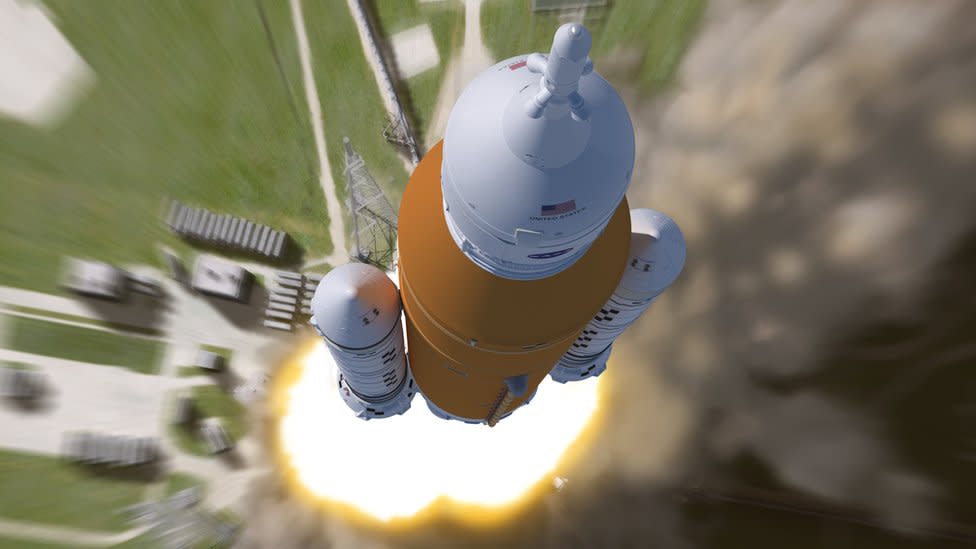
The Block 1 SLS will generate 8.8 million pounds (39.1 Meganewtons) of thrust at launch, 15% more than the Saturn V.
In the 1960s, the Soviet Union built a rocket called the N1, in a bid to reach the Moon.A future version of the SLS - called Block 2 cargo - should approach the N1's thrust levels.The rocket will stand 98m (322ft) tall in its initial, or Block 1, configuration.A future version of the SLS, called Block 2 Cargo, will launch 46 tonnes (101,400 pounds) to the Moon.The SLS will produce 8.8 million pounds (39.1 Meganewtons) of thrust in its Block 1 configuration.The SLS core stage is based on the space shuttle's foam-covered external tank.The solid rocket boosters play much the same role in both vehicles.
As an example of these different stresses, in the space shuttle, the RS-25 engines were canted up and away from the solid rocket boosters.But without significant modifications, no existing boosters have sufficient power to send Orion, astronauts and large cargo to the Moon in one flight - as the SLS would have.